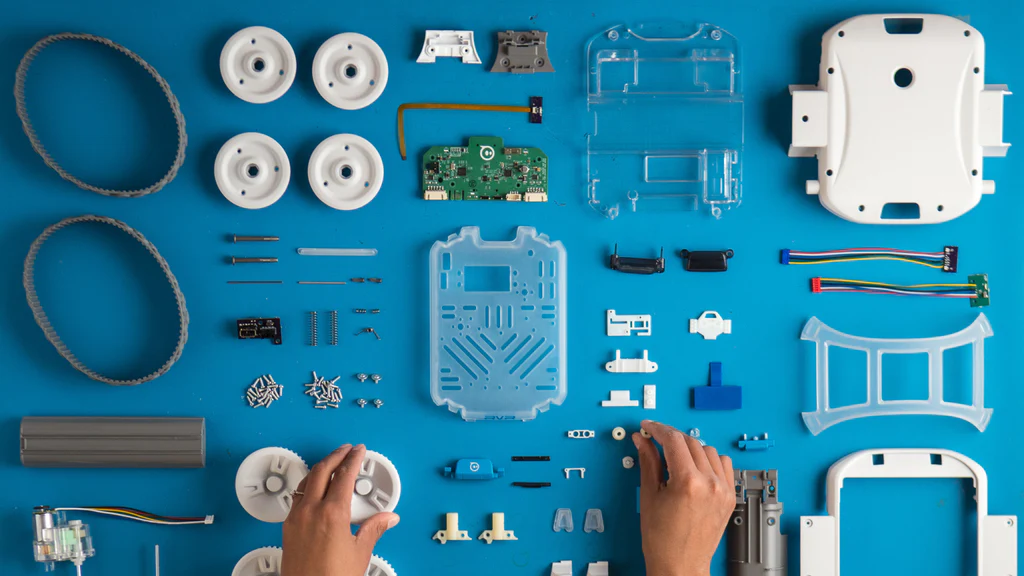Building your own DIY robot is an exciting and educational project that combines electronics, programming, and mechanical assembly. In this step-by-step guide, we will walk you through the process of building a basic robot, providing you with the foundational knowledge and skills to bring your creation to life. Let’s get started!

1. Define Your Robot’s Purpose:
a. Determine the Function: Decide what tasks or functions you want your robot to perform. Examples include line following, obstacle avoidance, or remote control.
b. Plan the Features: Consider additional features such as sensors, actuators, or communication capabilities that align with your robot’s purpose.
2. Gather Your Materials and Components:
a. Microcontroller: Select a microcontroller board like Arduino or Raspberry Pi as the brain of your robot. These boards provide a wide range of functionalities and have a supportive community.
b. Motor Drivers: Choose motor drivers compatible with your chosen microcontroller board to control the movement of your robot’s motors.
c. Motors and Wheels: Select appropriate motors and wheels based on the size and weight of your robot. DC motors with encoders are commonly used for precise movement.
d. Sensors: Consider sensors such as ultrasonic sensors, line-following sensors, or infrared sensors to enable your robot to interact with its environment.
e. Power Supply: Determine the power requirements of your components and choose a suitable power supply, such as batteries or a power bank.
3. Assemble the Robot:
a. Chassis Construction: Build or modify a chassis to house the components of your robot. You can use materials like acrylic, 3D-printed parts, or recycled materials.
b. Motor and Wheel Installation: Attach the motors and wheels to the chassis according to your design. Ensure proper alignment and stability.
c. Sensor Mounting: Mount the sensors on the chassis or an additional sensor holder. Position them strategically to achieve the desired functionality.
d. Wiring: Connect the components to the microcontroller board, ensuring proper wiring connections and organizing the cables to prevent interference.

4. Program the Robot:
a. Programming Environment: Set up the necessary programming environment for your microcontroller board. Install the required software, such as the Arduino IDE or Python IDE for Raspberry Pi.
b. Coding: Write the code that will control your robot’s behavior. Start with basic functions like motor control and gradually add functionality based on your robot’s purpose.
c. Sensor Integration: Incorporate sensor readings into your code to enable your robot to interact with its environment. Implement control algorithms based on sensor inputs.
d. Testing and Debugging: Test your code and make necessary adjustments to ensure proper functionality. Use debugging techniques like printing values or using debuggers to identify and resolve any issues.
5. Refine and Enhance:
a. Iterative Improvement: Continuously improve your robot’s design, code, and functionality based on testing and user feedback.
b. Additional Features: Consider adding more advanced features such as wireless communication, speech recognition, or autonomous navigation to further enhance your robot’s capabilities.
c. Aesthetics and Customization: Personalize your robot’s appearance by adding decorations, colors, or 3D-printed accessories.
6. Documentation and Sharing:
a. Document Your Project: Record the details of your project, including the design, assembly steps, and programming code. This documentation will be valuable for future reference and sharing with others.
b. Share Your Experience: Share your robot-building journey, including pictures, videos, and insights, with the DIY robotics community. Participate in online forums or local maker spaces to connect with fellow enthusiasts and gain inspiration.

Conclusion:
Building a DIY robot is an exciting and rewarding endeavor that combines creativity, technical skills, and problem-solving. By following this step-by-step guide, you can embark on your robot-building journey with confidence. Remember to experiment, learn from failures, and iterate on your design and code. Embrace the process, have fun, and unleash your creativity to create a robot that meets your goals and sparks your imagination. Happy building!